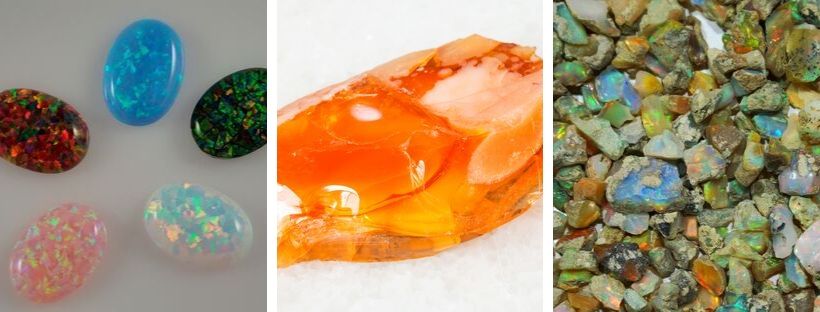*Opal Terminology:
“Play-of-color” is the proper term to describe the rainbow flashes in Precious Opal. In the gem world, “fire” refers to the effects of faceting a stone causing scintillation as light enters a gemstone, bending and refracting to result in flashes of color. This is a distinct and different optical phenomenon from play-of-color. The only time “Fire” is used to refer to opal is when describing the reddish-orange body color.
“Body color” refers to the background color of the Opal and can range greatly because Opal forms out of a gel-like substance that readily accepts chromophores (“coloring agents”). The most common body colors are white, black, pink, blue, reddish-orange, green, yellow, purple and clear (also referred to as “crystal” body color).
“Precious” is a term applied to Opals that display play-of-color regardless of body color.
“Contra Luz” literally translates as “against light” and describes an extremely rare variety of play-of-color that is only visible when the Opal is held with the light source behind it as opposed to above it.
“Common” is a term applied to Opals that exhibit NO play-of-color regardless of body color.
“Potch” is a term applied to Opals that have little to no play-of-color with an undesirable gray or brown body color.
“Matrix” is a term applied when the Opal occurs interstitially between grains of sand or ash.
Opal Types:
All types of Opal can be Precious or Common, but nomenclature usually dictates that the body color and/or locality determine the Opal’s name. For example, Black Opal can be precious or common. Some gem enthusiasts would call the precious variety Precious Black Opal or Black Precious Opal. In some cases the “precious” is dropped completely and the term Black Opal implies the precious aspect since Common Black Opal is usually just referred to as potch.

